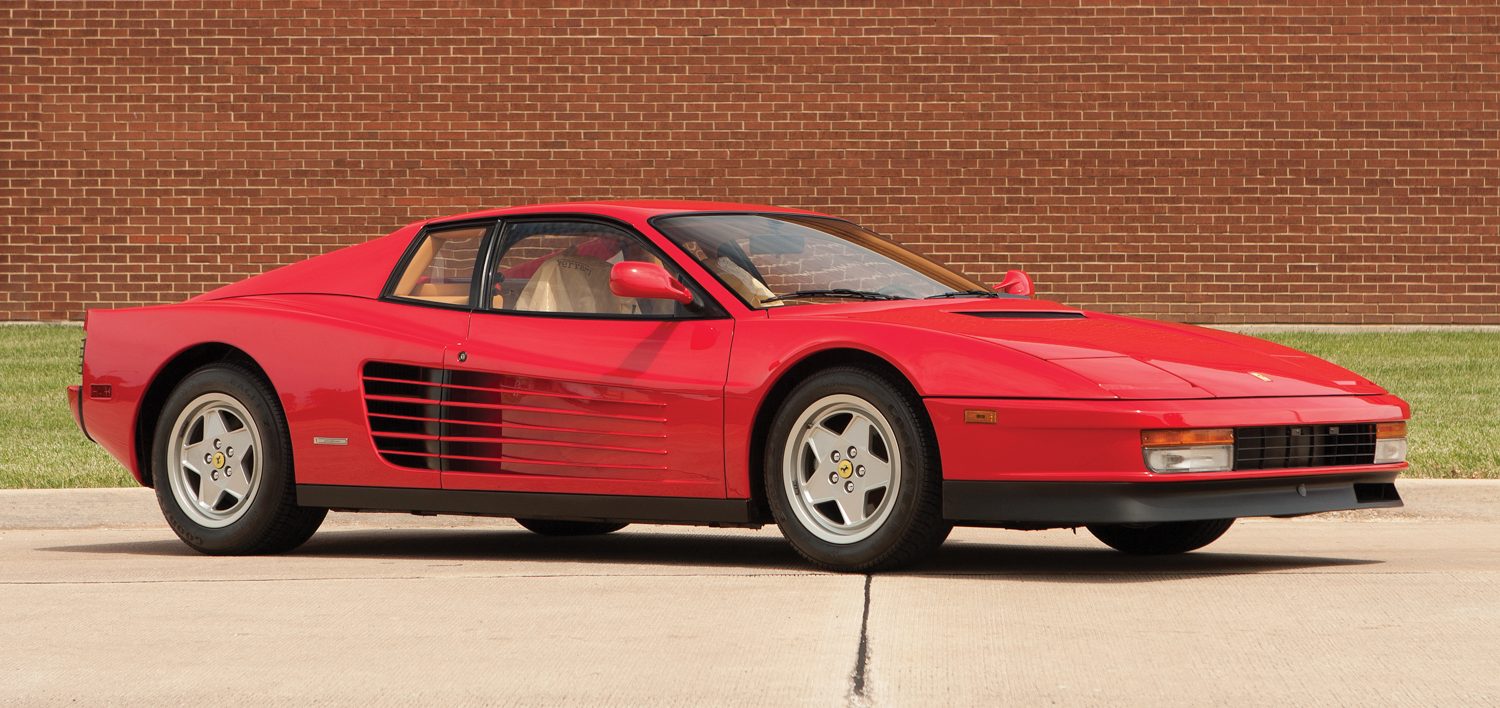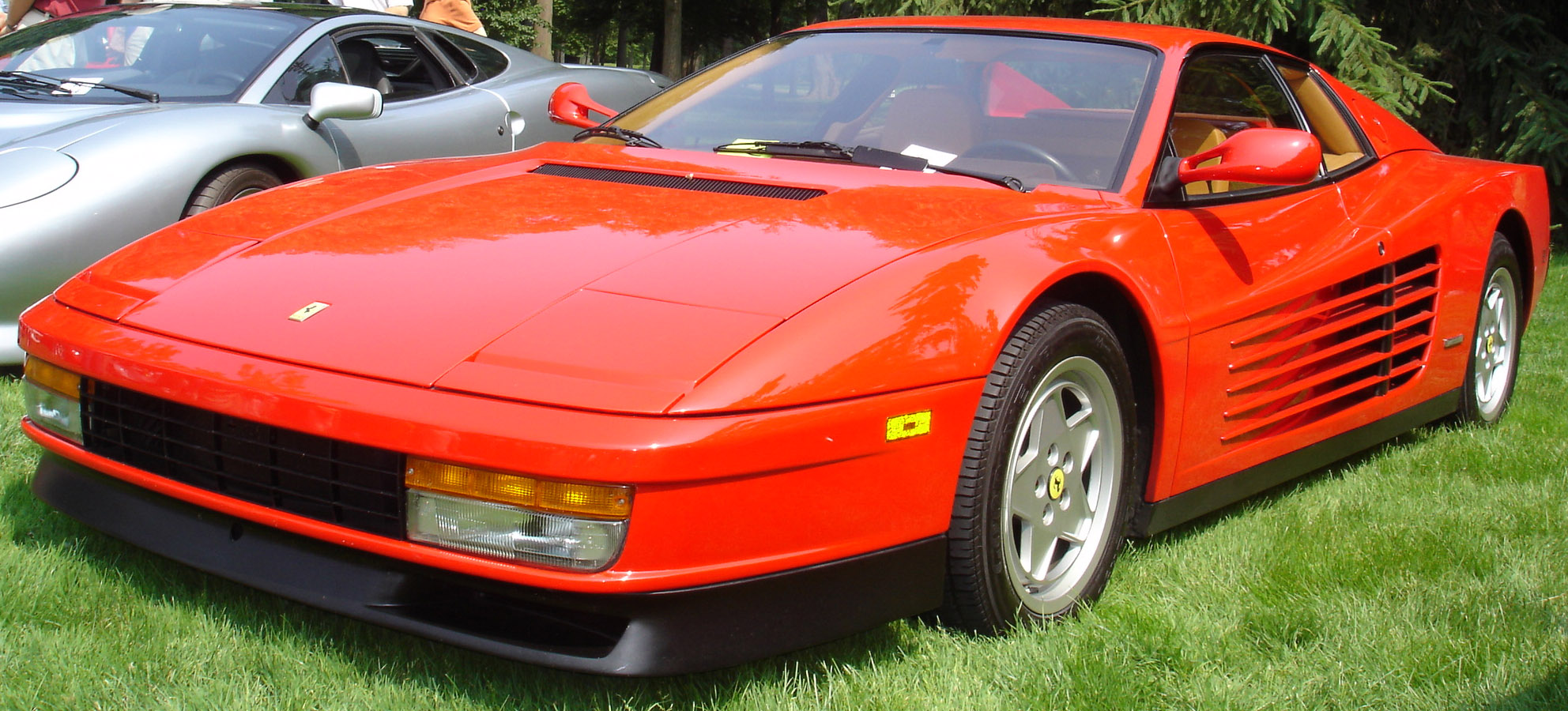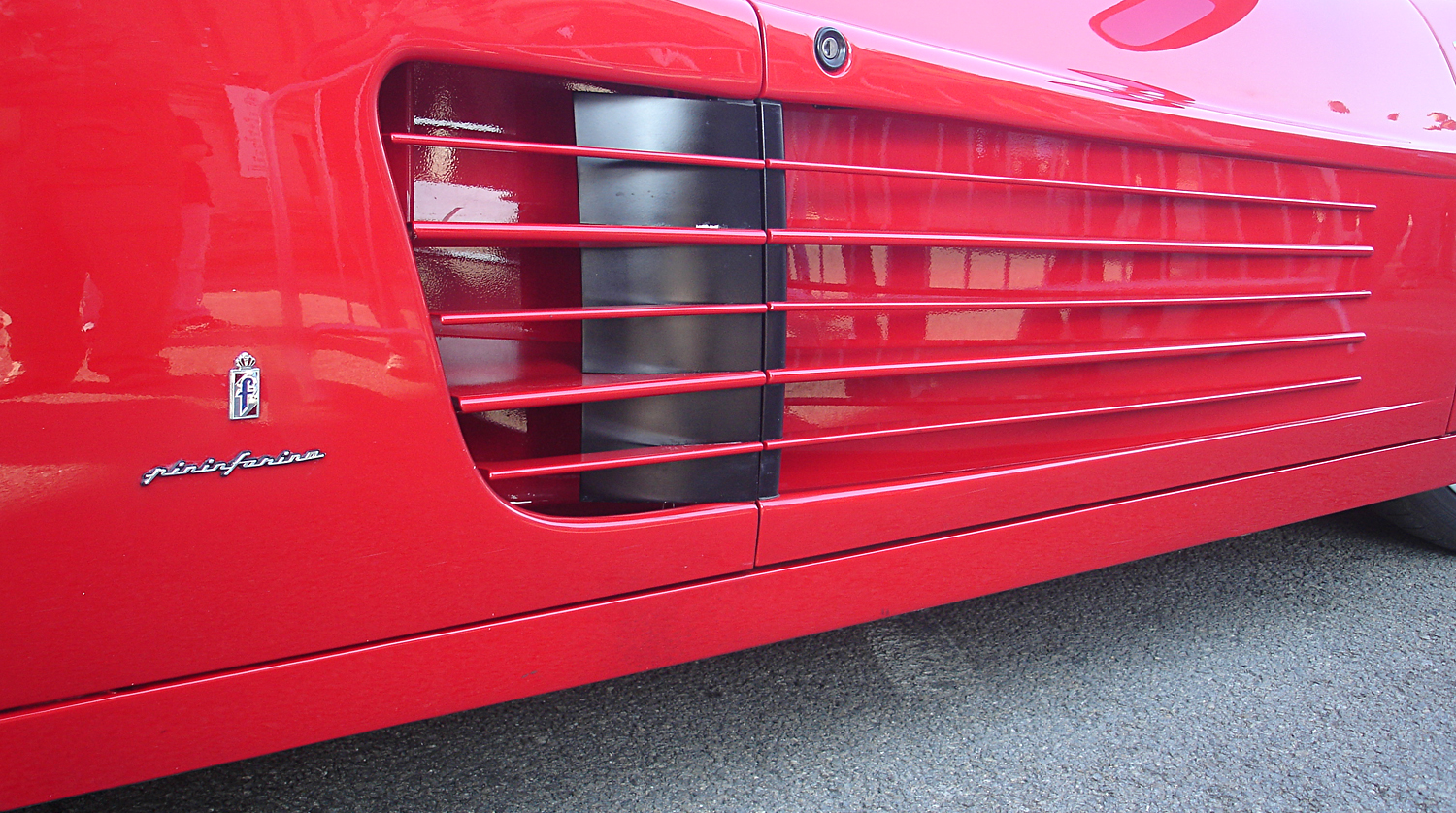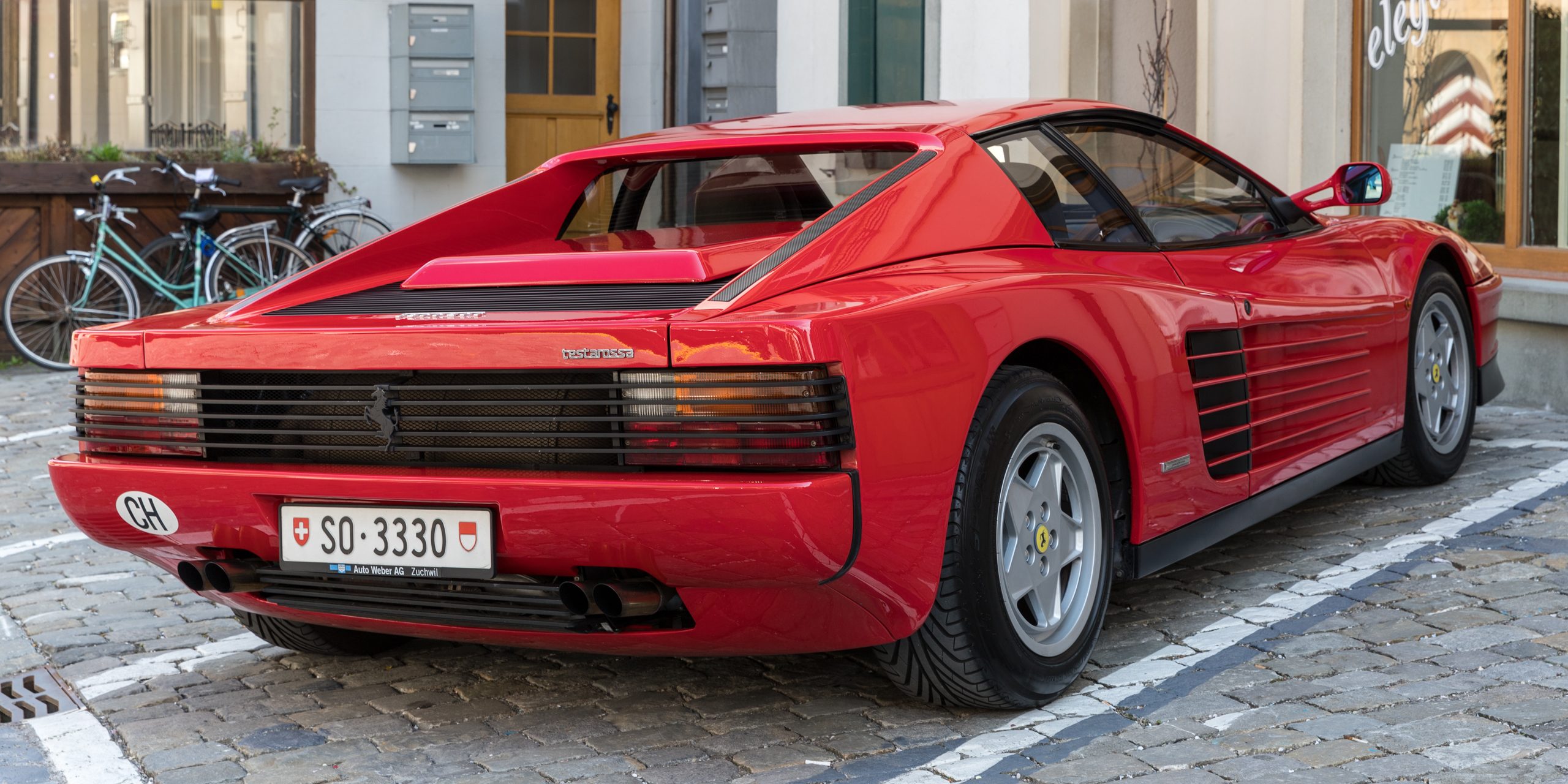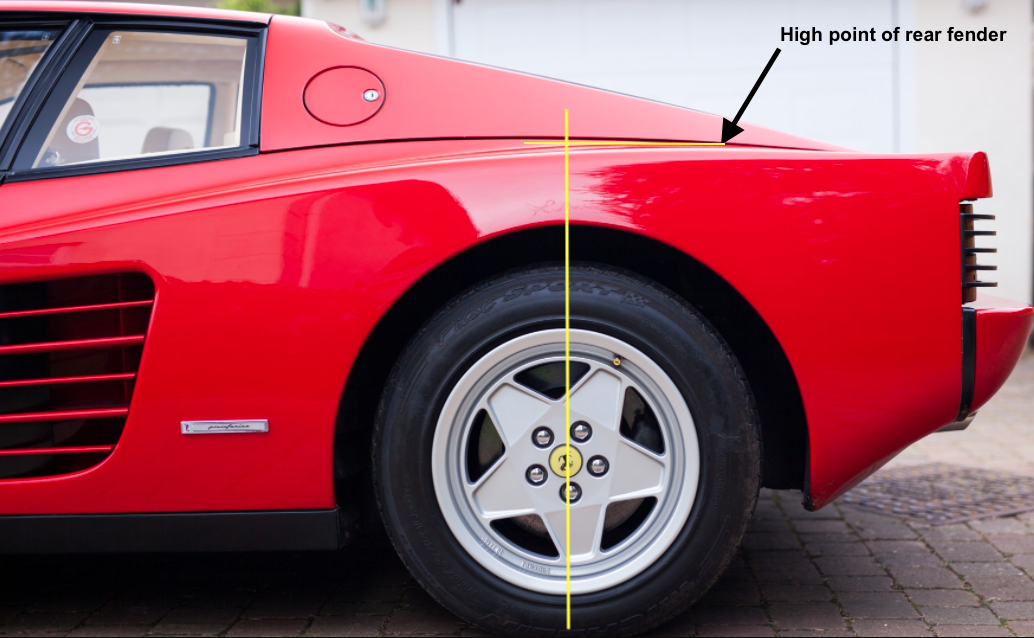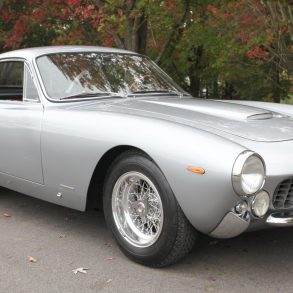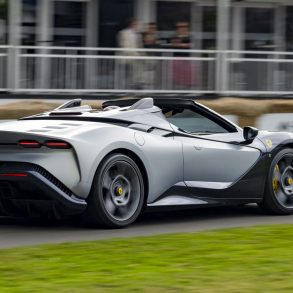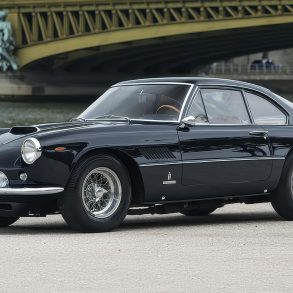My friend had done well that year. He was quite a bit older, but we’d bonded over cars, especially as I was starting my second year at Art Center training to be a car designer. One evening he pulled up to my apartment in his brand-new Ferrari Testarossa, I was shocked. Having paid a premium for it, he was probably one of the few in Los Angeles fortunate enough to take delivery. Red over tan leather, it was outrageous in every dimension, at every level of performance, and exceptional in detail.
Introduced at the Paris Auto Show in 1984, the Pininfarina designed Ferrari Testarossa truly shocked everyone with unprecedented styling, remarkable performance, and technical innovations. Designer and trained aerodynamicist Leonardo Fioravanti, already credited with many modern Ferrari designs, set the stage for a dramatic departure from the aging Berlinetta Boxer. The risks were very high as Ferrari needed to establish leadership and volume sales, particularly in North America. They not only needed a top selling car, they needed a car that would set new standards for their brand. Not only did the Testarossa deliver superlative performance, it provided dramatic visual results, born of necessity. Dealing directly with the previous cooling challenges and cabin heat issues that had plagued the 512 BB, the Testarossa design team placed radiators on each side of the car, adding a full 12” of additional width, while also increasing the wheelbase.
Of course, the added room allowed for ample trunk and passenger space, but the most striking design feature was the bold use of the enormous side openings, accented by five horizontal blades or strakes, which visually diffused the vast intake chambers while also meeting U.S. safety requirements for open venting. Whatever controversy ensued over the advanced looks was immediately quieted by surprising performance statistics and ultimately record-breaking sales.
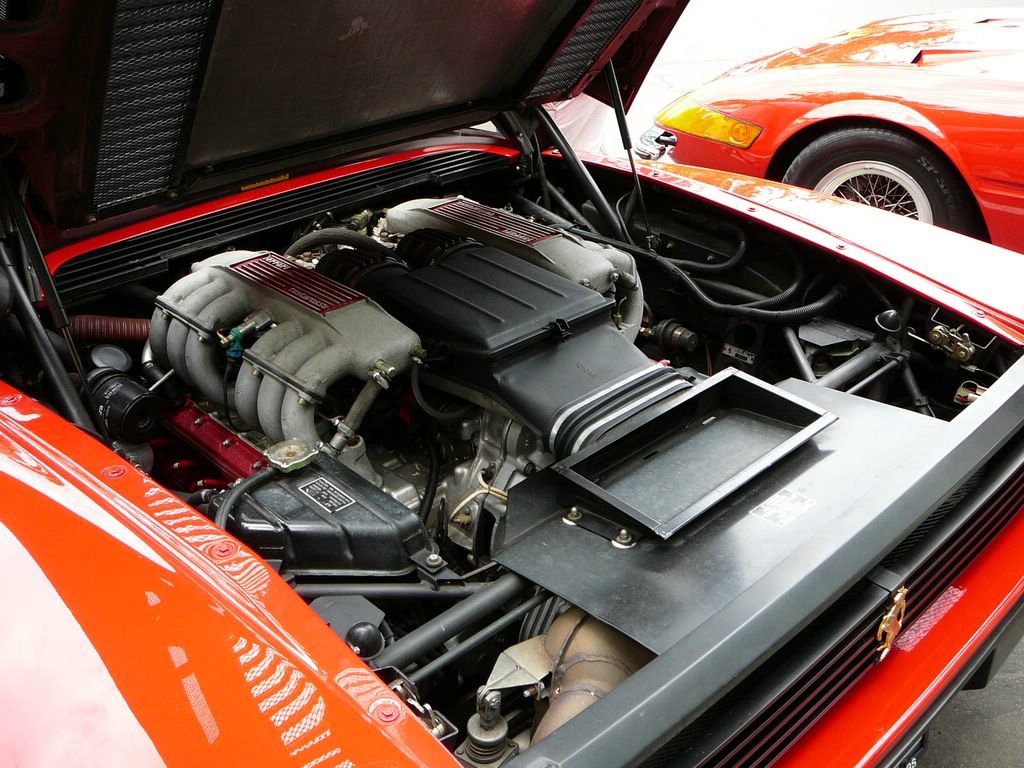
Power for the new design came from a new Ferrari four valve, horizontally opposed, 12-cylinder engine capable of delivering 390 hp. Quick and capable at high speeds, the Testarossa was properly appointed inside with leather seats and a wide console. The sizable trunk and comfortable seating position made it an ideal car for comfortable long-distance high-speed touring.
Early examples are today known for their single side mirror, placed high on the driver’s side A-pillar, referred to as “Monospeccio”. Later series cars would adopt dual mirrors mounted in a lower position, removing one of the most unique features of this car. And while these truly ground-breaking cars established Ferrari as a leader in design and technology, even though 35 years have lapsed since its debut, the Testarossa still inspires as a lasting statement of advanced design.
The first thing you notice about the Testarossa is the astonishing width. At 78” across, the rear view is even more accentuated by the black slatted rear taillight band that extends the entire length of the rear fascia. Concealing the taillights and offering a glimpse into the massive V12 engine lurking behind, the tailored sail panels rise up from the rear fenders, tapering inward to form the tight roofline.
The long rear and dramatic front overhang give the Testarossa an elegant, low stance with an almost quiet front end, featuring hidden headlights and a body colored front bumper. This clean and quiet presence was all the more mysterious as the dramatic sloped windshield and ample side glass offered a visual impression of a sports car, curiously displaying ample passenger room. With great width, trunk space, and a well-balanced seating position, the Testarossa was not only comfortable, it was tailored like an athlete, in a fine fitting suit.
In addition to the stunning visual elements of the overall design, the Testarossa is exceptionally slippery, besting the contemporary Lamborghini Countach with a Cd of 0.36. Poised and refined without the need for a rear spoiler, the Countach appears bloated against the elegant Testarossa. As with so many exceptional Italian designs, the Testarossa is all about the details. One of the most intelligent and seldom noticed details is hidden in those infamous side strakes.
Yes, the door handles are cleverly parked under the undercut of the sloping edge, but if you look closely at each of the five strakes, the first one at the top is thin, the second one down is almost 50% thicker, and the third one is thin (matching the first) with the 4th repeating as thick, and the 5thbecoming thin again. This clever proportional balancing trick is specifically designed to allow for visual compression on the stacking elements. Much like a Greek column has greater width in the center to prevent visual narrowing, these lines are proportionally balanced to give the impression of symmetry. Stepping back from the venting detail, the lines appear to all be the same dimension.
Another beautifully executed design element is the gentle rise of the rear fender line, generated from the front bumper cut line. Normally a front bumper cut line would be a feature to hide, but Pininfarina boldly introduced this line as the origin for the profile point to rise gradually above the growing side intake. As the curve rises, it plateaus, not (as typically found in most designs) directly above the centerline of the rear wheel, but cleverly after the centerline, gently rising up toward the rear where it meets a cresting edge, above the slight hollow of the trunk line. There is no halting moment or visual stopping point as your eye ‘racetracks’ the body. The Testarossa body lines keep your constant attention through fluid visual engagement.

Today, the Testarossa often is given the short shrift as an icon of the stumbling automotive ’80s. Nestled between the restricted designs of the late ’70s and the design renaissance of the early ’90s, the Testarossa is often dismissed as a “Miami Vice,” juvenile bedroom wall poster car, grouped in with Cobra replicas and vapid Duran Duran videos. While it certainly does exemplify those times, the Ferrari Testarossa was pure, refreshing, and novel in many ways, delivering a unique approach to sports car design, still impressive by modern standards. Capable today against contemporary exotics, the visually stunning Testarossa remains a remarkable object of performance, desire, and clever design.


